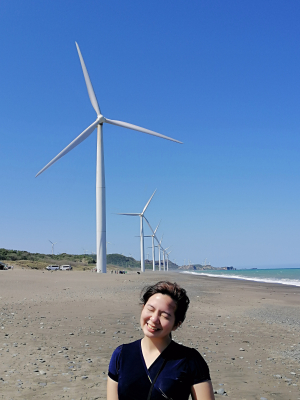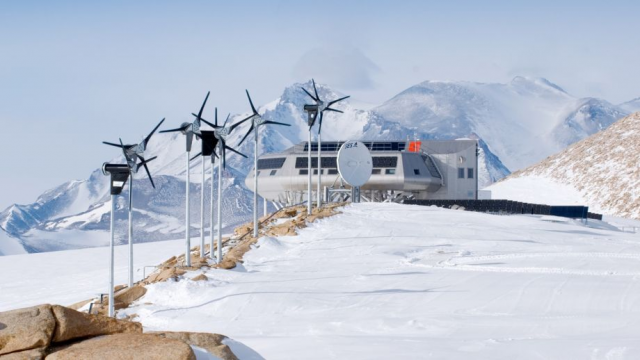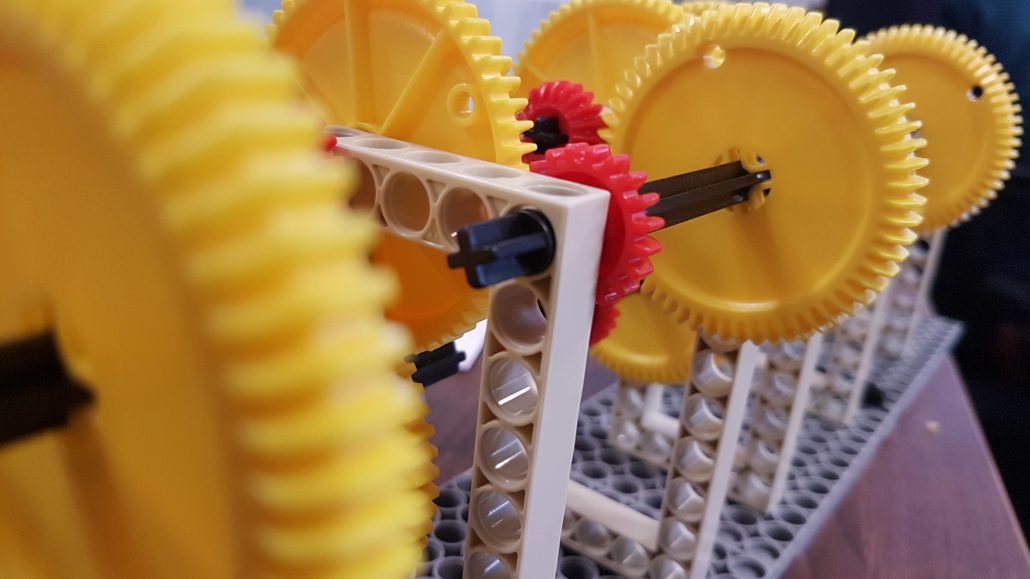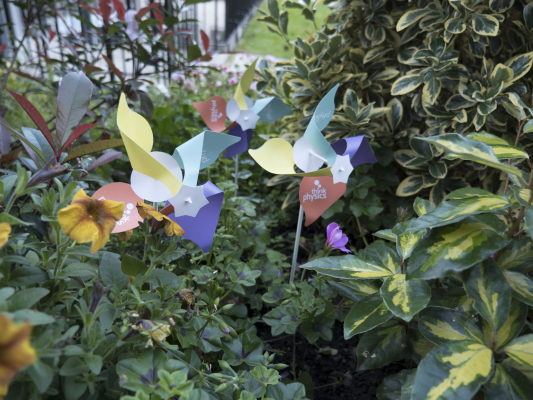What is a wind energy engineer?
A wind energy engineer is someone who uses the energy of the wind to feed electrical power systems or power grids. Wind energy engineering includes designing wind farms as well as making and testing all of the hardware and electrical components that are involved in harnessing wind power. There are many different types of engineers involved in wind energy projects, such as aerospace, civil, mechanical, electrical, and environmental engineers. At our workshop today, you became the engineers responsible for designing and testing the wind turbine blades to find the optimum shape and size.
Why do we use wind turbines?
The photograph to the right shows the wind turbines at the Princess Elizabeth Research Station in Antarctica. This is the first ever “zero emissions” research station, which means it runs entirely on renewable energy sources. Click here to read more about the Princess Elizabeth Research Station and here to find about the fascinating work that our colleague Dr. Kate Winter does there.
Wind energy is a renewable source as there is always wind on the earth and we are not using it up when we take energy from it, unlike non-renewable sources of energy such as gas, coal or oil. Wind power is considered “zero emission” as it does not cause pollution. Energy companies build wind turbines in windy places. Lots of wind turbines built together are called wind farms and if they are built out at sea they are called offshore.
You don’t need to go to the Antarctic to see wind turbines, we have our own in the North East of England! There are wind turbines all over Durham and in Northumberland. Click here to find out more about the wind turbines in Blyth.
How do wind turbines work?
As we saw in today’s workshop, a wind turbine works in the opposite way to an electric fan. Instead of using electricity to turn the blade to make wind, a wind turbine uses wind to turn the blades to make electricity.
If you watch the video you can see what happens inside the wind turbine. When the wind turns the blades, the blades turn a shaft. As you can see, the shaft turns slowly, but it is connected to gears which cause the smaller shaft to turn quickly. The smaller shaft drives the electrical generator which generates electricity.
What are gears?
Wind turbines use gears to change the speed of the shafts turning inside them. Gears are wheels with teeth that slot together. When one turns, the other turns too. Gears of different sizes are used to increase the power of the turning force. Small gears turn quickly but with a smaller force, whereas large gears turn slowly with a greater force. You may have already spotted gears on your bike, or know that you find gears in cars, but can you spot gears being used anywhere else at home?
You can buy simple gears sets (click here) or clock sets (click here) to start experimenting with gears at home.
Do try this at home: paper windmills
Today you used cardboard to create the blades of your wind turbines and it is easy to use things you have at home to design and make your own windmills. For a basic pinwheel design with easy to follow instructions, click here.
You might want to try the more complicated designs that you can find by clicking here.
What can you do to make your windmill spin faster? You could try a variety of materials or shapes to create a more effective design.
Do try this at home: wind socks
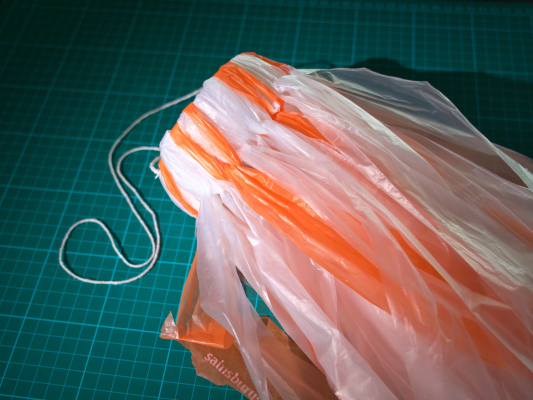
To make a wind sock you will need a carrier bag, some string, a pair of scissors, and an empty 2 litre pop bottle.
- Carefully cut a 3cm ring from your empty pop bottle.
- Cut a long thin strip from your plastic bag and loop it around your ring of plastic.
- Repeat step 2 until your plastic ring is covered, then tie a piece of string to the plastic ring.
Safe science – always take care when using scissors. Once the bottle has been cut, the plastic may be quite sharp. Remember that plastic bags can cause suffocation.
Now you have made a wind sock, take it outside and hold it above your head in the air. What happens? Why? If it’s a windy day, the wind sock should move. What do you think wind is?
How could you use the wind sock to measure the speed and direction of the wind? Start experimenting! You could attach the wind sock to a pole or the washing line in you garden or outside. Each day, take a look at the wind sock to see how fast the wind is moving and its direction.

